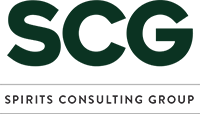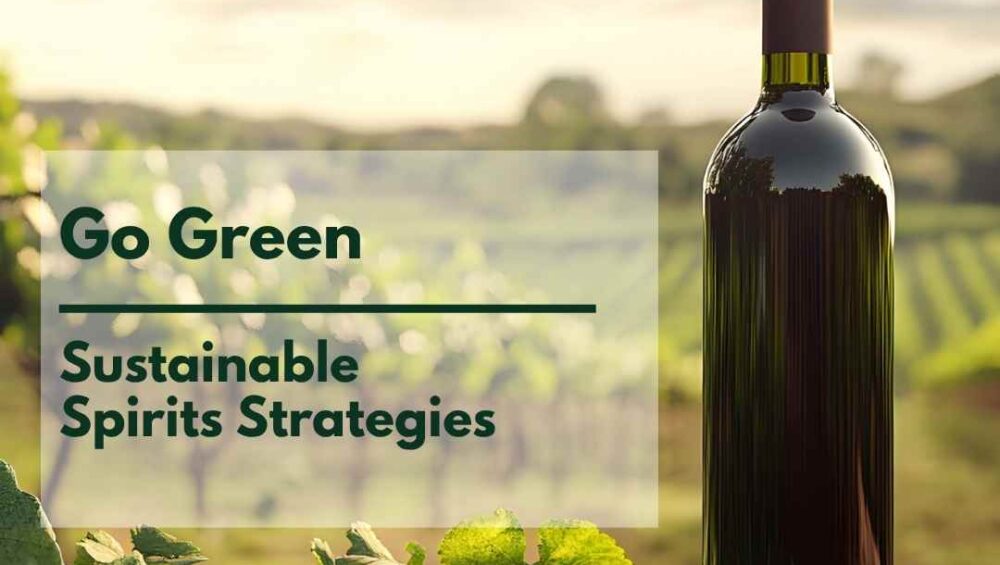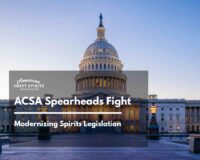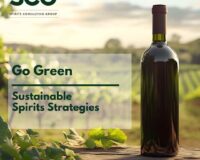Sustainable Spirits Strategies for 2025
Introduction
In 2025, sustainability isn’t just a buzzword—it’s a business imperative for spirits brands aiming to thrive in key markets like NYC, D.C., and Austin. With searches for “eco-friendly alcohol brands” up 20% year-over-year (Google Trends, May 2025), and 72% of consumers willing to pay more for sustainable products (McKinsey 2025), the demand for green practices is clear. For alcohol and wine brands, especially new entrants like RTDs launching into a competitive marketplace, sustainability offers a powerful way to stand out. Legal drinking age Gen Zers, a key demographic in these markets, is leading the charge—60% prefer eco-friendly brands (Nielsen). Meanwhile, industry leaders like Diageo are setting the standard with carbon-neutral distilleries (BevNET 2025). At Spirits Consulting Group, we help brands embrace sustainability from formulation to production and market presence. We also work on brand communications to accurately highlight sustainability claims which boosts consumer loyalty and market presence. Let’s explore how you can build a sustainable spirits brand and win over eco-conscious consumers this year.
Why Sustainability Wins Over Consumers
Sustainability resonates deeply with today’s consumers, particularly in urban hubs that are key spirits markets and known for their progressive values. Here’s why it matters for your spirits brand:
- Appeals to LDA Gen Z in Urban Markets: Gen Z patrons at D.C.’s rooftop bars or NYC’s trendy lounges prioritize eco-conscious brands. A 2025 survey found that 65% of Gen Z drinkers in these cities prefer brands with transparent sustainability practices (IWSR 2025). For a new RTD brand, this means showcasing green initiatives—like using recyclable cans or supporting local environmental causes. In Austin, where the craft beverage scene thrives, sustainability can also resonate at events like the Austin Food + Wine Festival, where eco-minded consumers seek brands that align with their values.
- Reduces Costs Amid Tariff-Driven Price Hikes: The spirits industry faces economic pressures, including tariffs threatening 74,000 U.S. jobs and $6.2 billion in lost sales (Toasts Not Tariffs). Sustainable practices, such as energy-efficient distillation or local sourcing when possible, can lower operational costs, helping brands offset these financial challenges. For example, reducing energy consumption in production can save up to 15% on utility costs (EPA 2025), providing a buffer against tariff-related price increases while appealing to eco-minded consumers.
- Builds Brand Loyalty and Trust: Sustainability isn’t just about cost savings—it’s about building a brand that consumers trust. A 2025 study revealed that 68% of consumers are more likely to remain loyal to brands that demonstrate environmental responsibility (Deloitte 2025). By positioning your spirits brand as a sustainability leader, you can foster long-term relationships with consumers, especially in key markets, where eco-conscious professionals value corporate responsibility.
By aligning your brand with sustainability, you not only attract loyal customers but also position yourself as a forward-thinking leader in a crowded market. This approach is crucial for brands at any stage as the industry undergoes a reduction in beverage alcohol consumption, an increase in consumer distraction and a surge in alternative beverages .
Steps to Build a Sustainable Spirits Brand
Building a sustainable spirits brand requires strategic changes across production, packaging, and marketing. Here are actionable steps to get started:
- Use Recyclable Packaging: Packaging is a visible way to showcase your commitment to sustainability. Opt for lightweight glass bottles or BPA-free recyclable cans, as suggested in our previous blog, Sustainable Practices for Spirits Brands. For example, a new RTD brand launching in NYC can use sleek, recyclable cans to appeal to eco-conscious consumers while reducing shipping costs—a win-win. Brands like Miami Cocktail Co. have adopted recyclable aluminum cans, reducing their carbon footprint by 10% (Miami Cocktail Co. 2025). This not only lowers environmental impact but also aligns with consumer expectations for sustainable packaging. Brands like Buzzballs have even created their own recycling program to deal with their multi-material packaging. Beyond the bottle, seek to reduce other packaging and marketing materials or ensure that you are using recyclable materials.
- Source Local Ingredients: Sourcing locally whenever possible reduces your carbon footprint and resonates with consumers who value regional authenticity. This has been the backbone of craft spirits appeal. New York wineries can use Hudson Valley grapes, while D.C.-based distilleries might source Maryland rye for whiskey production. This approach also mitigates supply chain disruptions caused by tariffs. For instance, if you are creating an RTD, sourcing local agave alternatives for a tequila-style cocktail can cut transportation emissions by up to 20% (USDA 2025). Highlighting these local connections in your branding—such as “Made with Hudson Valley Grapes” or “Made with NY apples”—can further appeal to urban consumers who prioritize community support.
- Promote Green Practices Online: Marketing your sustainability efforts is key to winning over eco-conscious consumers. Use a tool like Loomly (https://www.loomly.com/), as recommended in our social media tools guide, to schedule posts highlighting your green initiatives. Create campaigns with hashtags like #SustainableSpirits to engage eco-conscious consumers across platforms. For example, share a behind-the-scenes video of your distillery’s solar-powered operations or a post about your partnership with a local recycling program. A 2025 report found that brands using sustainability-focused social media campaigns saw a 25% increase in engagement among 21–34-year-olds (Sprout Social 2025). This strategy can amplify your brand’s visibility in urban markets like Austin, where eco-conscious festivals and events are prime opportunities for exposure.
These steps not only align your brand with consumer values but also help you navigate industry challenges, positioning you for long-term success in 2025 and beyond.
Actionable Tip: Highlight Certifications in Marketing Campaigns
One simple yet effective way to build trust with eco-conscious consumers is to highlight sustainability certifications in your marketing. Certifications like USDA Organic, Fair Trade, or B Corp signal your commitment to green practices. For example, you can feature USDA Organic certification on bottle labels and social media posts, reassuring consumers that your claims are real. A 2025 study found that 70% of consumers trust brands with third-party certifications more than those without (Forbes 2025). Use these credentials in email campaigns—like our 2025 Brand Checklist—and on platforms like Instagram to amplify your brand’s credibility and attract buyers willing to pay a premium for sustainable products. For added impact, create a dedicated landing page on your website showcasing your certifications, linked from your social media bios using a tool like Loomly’s link-in-bio feature.
Conclusion
Sustainability is more than a trend—it’s a competitive edge for spirits brands in 2025. By adopting green practices like recyclable packaging, local sourcing, and greener production, you can win over eco-conscious consumers in urban markets while mitigating while enjoying some financial benefits. Whether you’re a Founder launching a new product, a Senior Marketing leader aiming to differentiate your brand, or an Operations professional seeking cost-saving solutions, sustainability offers a path to growth. At Spirits Consulting Group, we’re committed to helping alcohol and wine brands achieve measurable results through tailored sustainability strategies.
Ready to go green with your spirits brand? Contact us today for a sustainability audit and start building a brand that resonates with today’s eco-conscious consumers.









